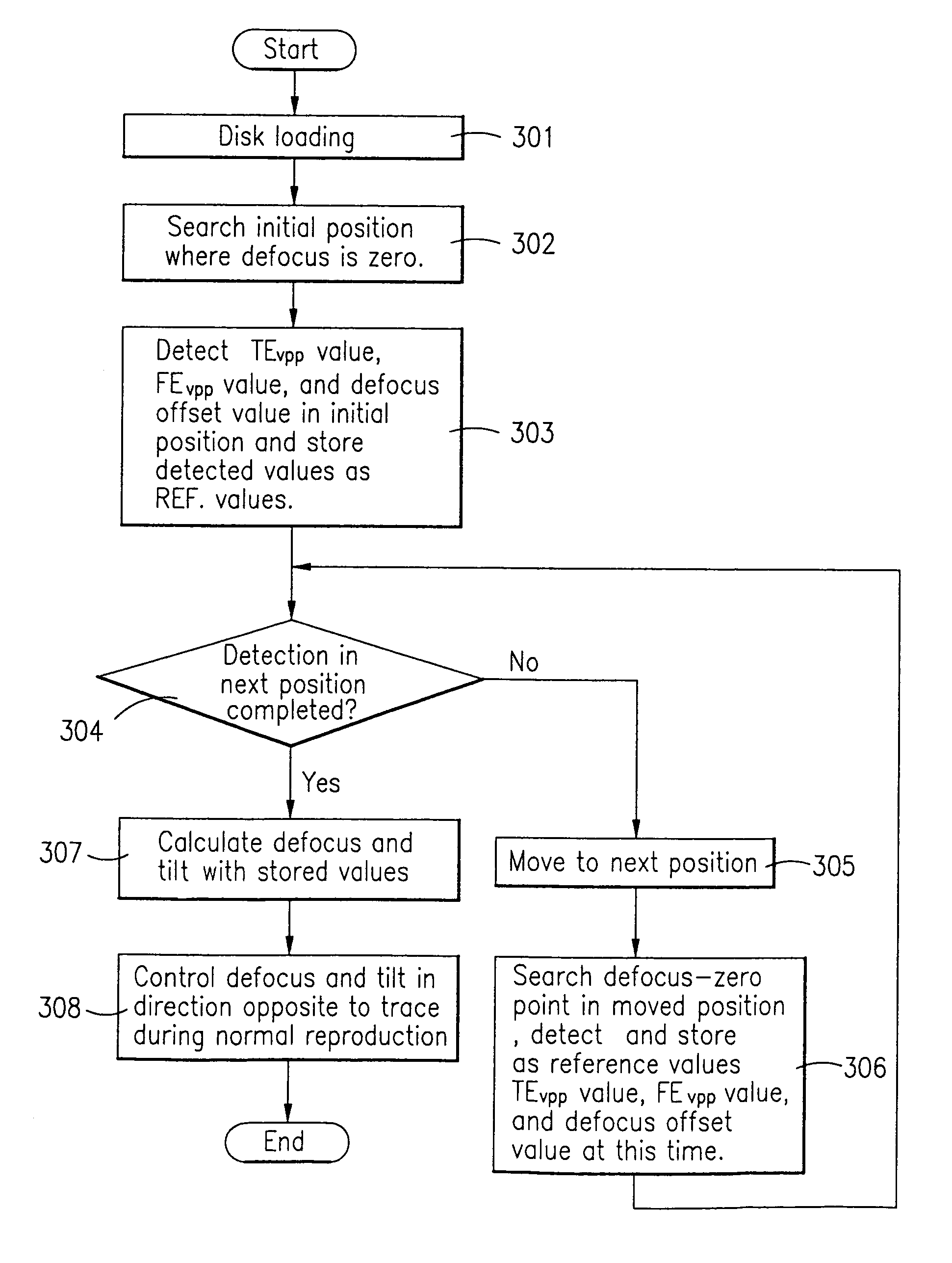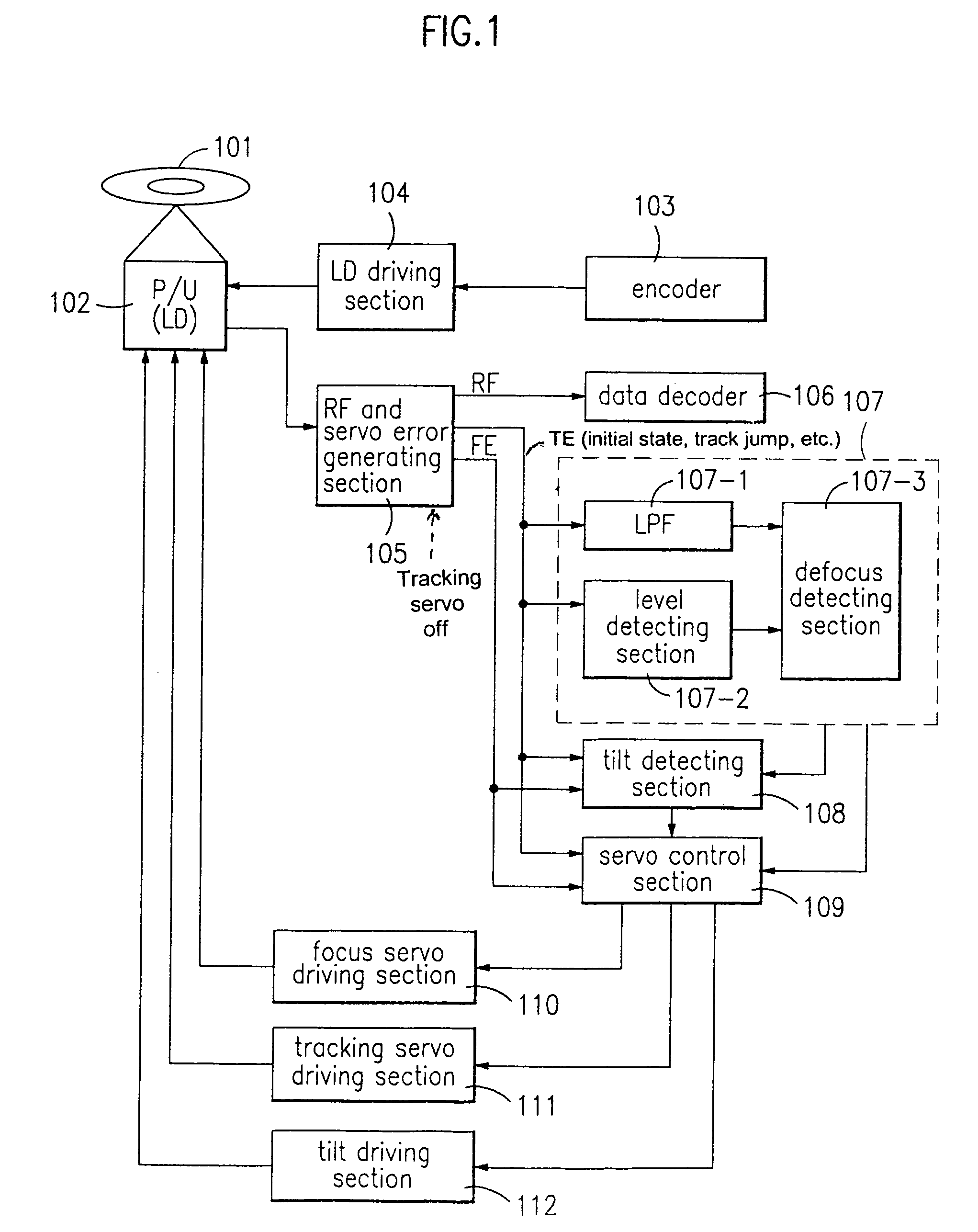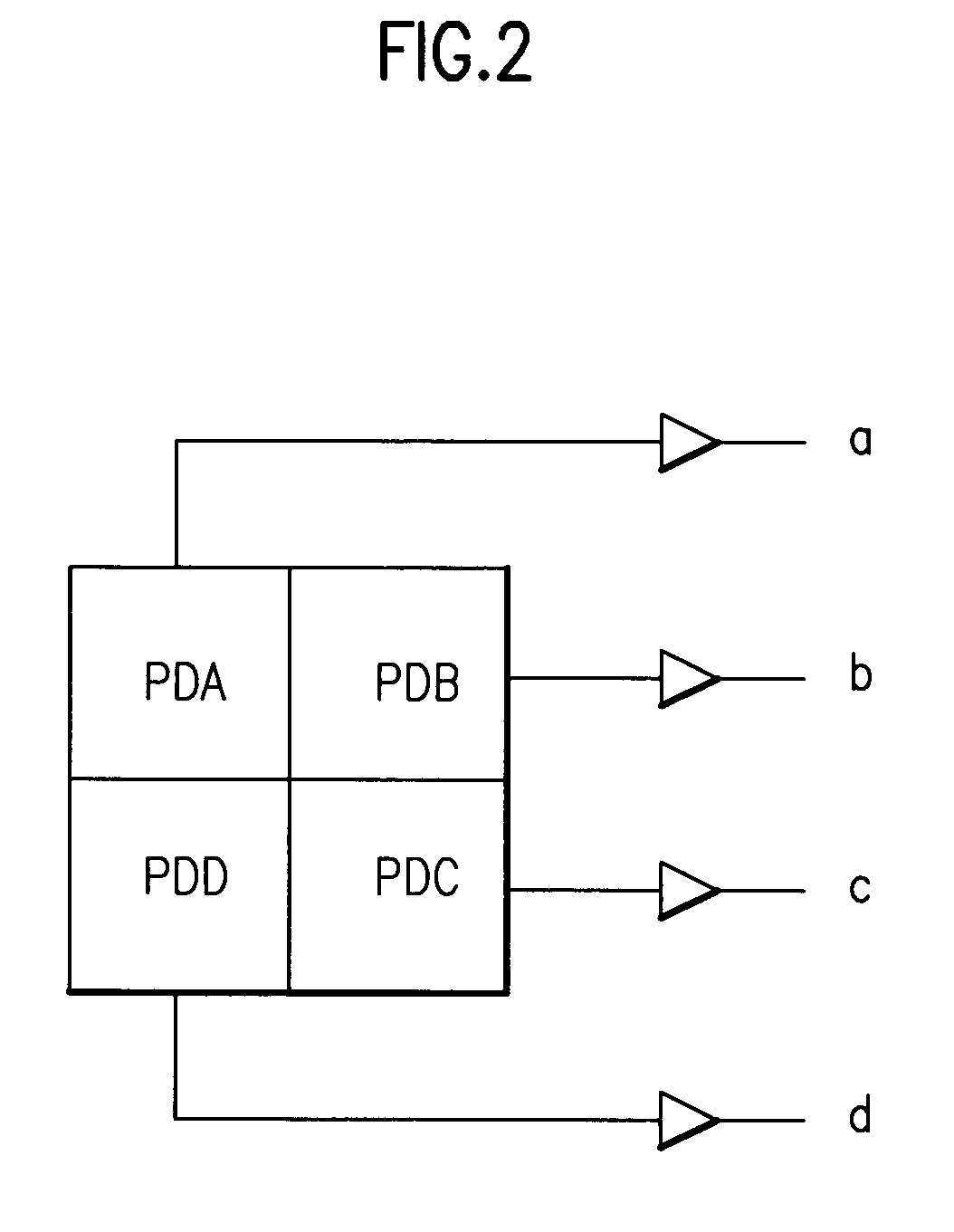Method of recording and reproducing an optical recording medium
a technology of optical recording medium and optical recording medium, which is applied in the direction of digital signal error detection/correction, recording signal processing, instruments, etc., can solve the problems of deviation of the beam from the corresponding track, difficulty in accurately reading the signal recorded, and eccentricity
- Summary
- Abstract
- Description
- Claims
- Application Information
AI Technical Summary
Benefits of technology
Problems solved by technology
Method used
Image
Examples
first embodiment
[0093]According to the first embodiment of the present invention, the tilt detection is respectively performed in a plurality of determined positions on the inner and outer peripheries of the disc when the system is initialized.
[0094]For instance, if the disc is loaded, the RF and servo error generating section 105 detects the tracking error signal and the focus error signal in the free running state in which only the focus servo is turned on, and outputs the detected tracking and focus error signals to the tilt detecting section 108 and the servo control section 109. The tracking error signal is detected by the eccentric disc if the optical pickup 102 is fixed and only the optical disc 101 is rotated in the state in which the focus servo is turned on and the tracking servo is turned off.
[0095]FIGS. 6 to 8 are graphs exemplifying that the tracking error signal and the focus error signal, which are detected in the free running state in which the focus servo is turned on and the track...
second embodiment
[0112]In the second embodiment of the present invention, the detection of the tilt is performed in the free running state, when the system is initialized. Specifically, when a disc is loaded in the free running state in which only the focus servo is turned on, the RF and servo error generating section 105 detects a tracking error signal and outputs it to the tilt control section 108 and the servo control section 109.
[0113]At that time, if the tilt does not occur, the center value of the tracking error signal has the same value on the inner or outer peripheries of the disc as shown in FIG. 9A.
[0114]By contrast, if the tilt occurs, the center offset of the tracking error signal is produced as shown in FIG. 9B. In other words, the center value of the tracking error signal detected on the inner and outer peripheries differs depending on the tilt.
[0115]Therefore, if the center value of the tracking error signal is detected at a predetermined position of the inner and outer peripheries in...
PUM
| Property | Measurement | Unit |
|---|---|---|
| time | aaaaa | aaaaa |
| size | aaaaa | aaaaa |
| recording density | aaaaa | aaaaa |
Abstract
Description
Claims
Application Information
 Login to View More
Login to View More - R&D
- Intellectual Property
- Life Sciences
- Materials
- Tech Scout
- Unparalleled Data Quality
- Higher Quality Content
- 60% Fewer Hallucinations
Browse by: Latest US Patents, China's latest patents, Technical Efficacy Thesaurus, Application Domain, Technology Topic, Popular Technical Reports.
© 2025 PatSnap. All rights reserved.Legal|Privacy policy|Modern Slavery Act Transparency Statement|Sitemap|About US| Contact US: help@patsnap.com



